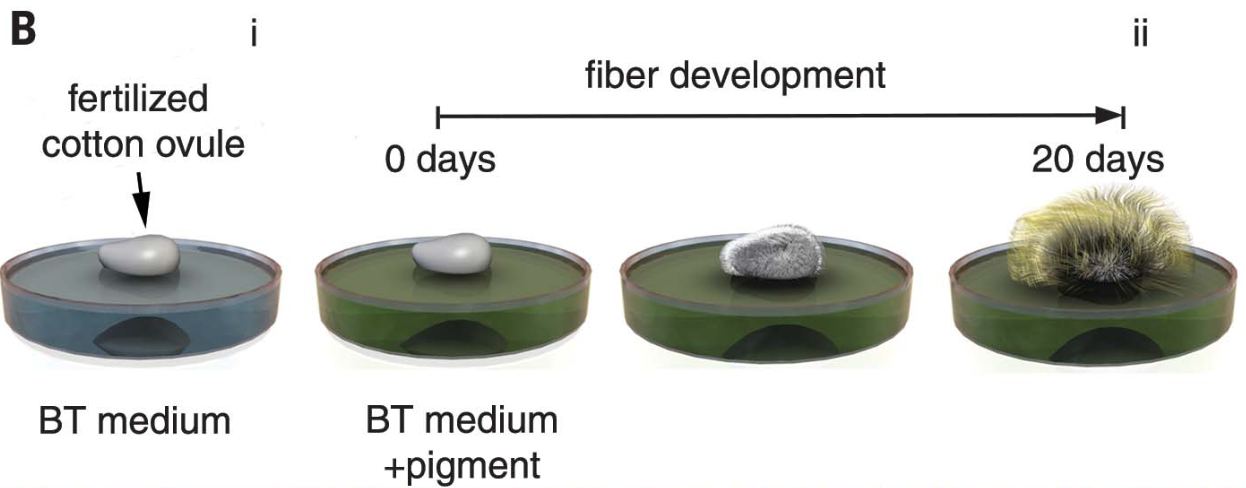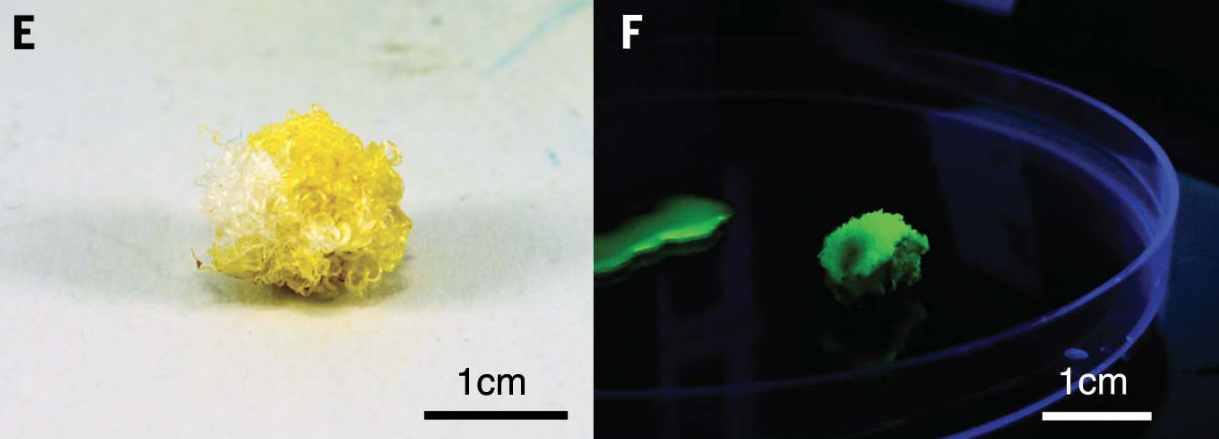
Someday, everybody will be wearing smart clothes -- not just clothes that look dapper, but are able to sense the environment and the body's vital signs, perhaps then pinging the data to your wrist watch or doctor. To get there, we will need functional fabrics, and nothing beats the touch and feel of cotton1.
Natural cotton fibers, which are made of cellulose, must be chemically modified if they are to be engineered into smart fabrics. This could be done after the cotton has been harvested (like when clothing is dyed), but the drawback is that this sort of modification wears out. A better way would be to modify the cotton as it is being synthesized by the plant, so that the new properties are physically built into the cotton fibers. Now an international team of researchers has done just that, creating one type of cotton that fluoresces and glows in the dark, and another variety that is magnetic2.
To achieve this, the scientists placed tiny fertilized ovules into a dish containing plant food as well as their specialized molecules. After 20 days, the ovules produced cotton fibers that were modified by these molecules. (See diagram below.)

The reason the plant could incorporate these special molecules is because they were attached to glucose. Glucose (a sugar) is the key ingredient in cellulose (a plant fiber). When the plant soaked up the glucose-linked molecules, it treated them just like normal glucose molecules. The plant shipped them out to the growing cellulose chain and chemically integrated them into the cotton fibers. (See upper-left image.)
One of these specialized molecules turned the cotton yellow (under normal light) and fluorescent green (under UV light.) (See image below.)

Another specialized molecule contained the rare earth element dysprosium, which has magnetic properties. When the plant incorporated it into the cotton fibers, the cotton displayed magnetic properties, as well.
With literally millions of organic and inorganic molecules, the potential applications of this discovery are limited only by our imagination. Our command of chemistry is such that any molecule with a desirable property can either be isolated from nature or created in the laboratory. Simply attaching this molecule to a glucose molecule would then allow scientists to sneak it into an unsuspecting plant. And there's no reason to stop with cotton; the authors note that bamboo, flax, and silk would probably be amenable to such chemical modification.
Combined with the burgeoning field of genetic modification, clearly, the next revolution in engineering will be at the molecular level.
Source: Filipe Natalio, et al. "Biological fabrication of cellulose fibers with tailored properties." Science 357 (6356): 1118-1122. Published: 15-Sept-2017. DOI: 10.1126/science.aan5830
Notes
(1) It is, after all, the fabric of our lives.
(2) A labeling error has resulted in Science publishing an "editorial expression of concern," but it appears as if the error is minor and will be fixed.



